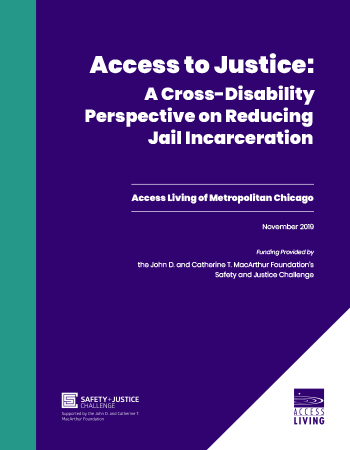Publication
Bail
Community Engagement
Crime
Data Analysis
Featured Jurisdictions
Human Toll of Jail
Jail Populations
Pretrial and Bail
Pretrial and Jails
Pretrial Justice
Pretrial Services
Racial Disparities
July 1, 2022
Expanding Supervised Release in New York City
Safety and Justice Challenge, Center for Court Innovation
In 2015, the John D. and Catherine T. MacArthur Foundation launched the Safety and Justice Challenge (SJC), a multi-year initiative to reduce populations and racial disparities in American jails. To advance knowledge development grounded in a research agenda that explores, evaluates, and documents site-specific strategies to safely and effectively reduce jail populations and address racial and ethnic disparities, the Foundation engaged the Institute for State & Local Governance (ISLG) at the City University of New York (CUNY) to establish and oversee an SJC Research Consortium. Consortium members are nationally renowned research, policy, and academic organizations collaborating with SJC sites to build an evidence base focused on pretrial reform efforts.
Under New York City’s Supervised Release Program (SRP) individuals awaiting trial are released under community supervision to ensure their return to court, instead of via bail or pretrial detention. Defendants are eligible for the citywide SRP if they meet specific criteria, including arrest charge type, estimated risk status, and community ties. Towards the goal of reducing the jail population, New York City expanded the City’s Supervised Release Program (SRP) several times by altering the eligibility criteria to include a wider range of individuals. The first large expansion of SRP since 2016 occurred at the beginning of June 2019. A subsequent program expansion occurred in December 2019 as New York State prepared for 2020 bail reform legislation to go into effect.
In an effort to better understand the impact of expansion of SRP as a jail-reduction strategy, ISLG and the SJC Research Consortium funded the Center for Court Innovation to examine the impact of the June 2019 expansion. The Center conducted a time series analysis to determine if observed post-expansion SRP enrollment and/or detention rates significantly differed from predicted rates. The study found that the expansion increased SRP rates across racial groups and reduced detention for non-violent felony offenses, though not for misdemeanor offenses. In addition, the findings show increased use of SRP for misdemeanor offenses, which may suggest net-widening.
Key takeaways:
Increasing program participation does not always decrease detention. For small program expansions (like the 2019 expansion) to have a true impact on detention, these initiatives must target serious crimes that are likely to be detained.
Large changes are needed for large impact. Larger expansions, especially those that are driven by legislative change (like the December 2019 expansion in preparation for bail reform), can have a greater impact on detention compared to smaller expansions.
Targeted efforts to reduce racial disparities are necessary. Disparities are not automatically impacted by increasing program participation and decreasing detention across the board. To reduce racial disparities, targeted efforts must be made.
Together, the findings suggest that the SRP expansion reduced detention for some offenses and highlight the importance of measuring the impact of program implementation and expansion to inform future work and jail reduction efforts in New York City and other jurisdictions.

